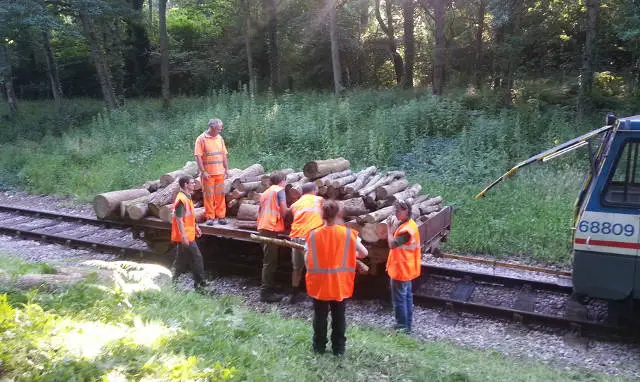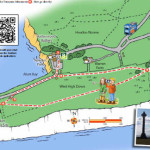Thanks to Peter from the Hampshire & Isle of Wight Wildlife Trust for sharing this latest news with OnTheWight readers. Ed
Hampshire & Isle of Wight Wildlife Trust and the Isle of Wight Steam Railway have combined forces to overcome a problem of how to extract valuable coppiced timber from a wonderful nature reserve on the Island.
Swanpond copse
Swanpond copse is a splendid piece of undisturbed broadleaved semi-natural ancient woodland. It is a mix of oak and ash over hazel with thorns, field maple and alder.
It is managed on a coppice rotation with a coup of ash and hazel coppice cut each winter and standard trees thinned to create ideal conditions for a range of woodland species.
Habitat benefits many species
The management has been tailored to create and maintain habitat for Red squirrels and Dormice, but from this a whole range of other species benefit.
The site has some splendid woodland flora including Bluebells and Narrow leaved lungwort.
Woodland butterfly species are common including White admiral and Silver washed fritillary. Greater spotted woodpeckers, Great tit, Treecreeper and Chiff chaff are present throughout the woodland.
difficulty of removing timber
Due to its remote location and ground conditions, access to Swanpond copse is difficult and kit has to be walked onto the site. Over the years timber produced from conservation works has built up on the reserve.
Whilst deadwood is an important habitat, there were so many stacks of timber that it was decided that the timber needed to be extracted to prevent loss of woodland flora and regeneration.
Much of the timber is ash which has high value as firewood. It is hoped that this can be utilised to generate funds to put back into the management of the reserve.
Steam Railway to the rescue
The challenge lies in how to extract the timber. Swanpond copse is bordered by two railway lines, the steam line on the western side and the main Island line on the Eastern side. After consulting with the Isle of Wight Steam Railway, a plan was formulated to remove the timber utilising one of their maintenance vehicles and a flatbed truck.
A date was fixed and using the Trust’s quadbike, the timber was moved to rail side and then hand loaded onto the flatbed truck before being moved along and dropped off in a neighbouring field, where it will be collected and sold.
Jamie Marsh, the Wildlife Trust’s Isle of Wight Reserves Officer said,
“It was great that two local Island charities could work together on this exciting project. Through combined efforts a large amount of timber was removed and from this, positive benefits to local wildlife will occur. It was hard work but great fun doing something completely different.”




